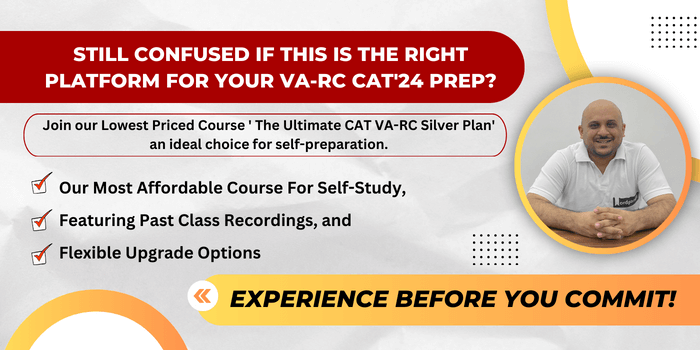Directions for questions no. 1 to 3 on the basis of the following information.
KK, an aspiring entrepreneur wanted to set up a pen drive manufacturing unit. Since technology was changing very fast, he wanted to carefully gauge the demand and the likely profits before investing. Market survey indicated that he would be able to sell 1 lakh units before customers shifted to different gadgets. KK realized that he had to incur two kinds of costs – fixed costs (the costs which do not change, irrespective of number of units of pen drives produced) and variable costs (= variable cost per unit multiplied by number of units). KK expected fixed cost to be Rs. 40 lakh and variable cost to be Rs. 100 per unit. He expected each pen drive to be sold at Rs. 200.
For questions 1 to 3:
Question 1. What would be the break-even point (defined as no profit, no loss situation) for KK’s factory, in term of sales?
A. Rs. 80 lakh
B. Rs. 100 lakh
C. Rs. 120 lakh
D. Rs. 140 lakh
E. Cannot be found with the given data.
Question 2. KK was skeptical that per unit variable cost might increase by 10% though the demand might remain same. What will be the expected changes in profit in such a case?
A. Profit would decrease by 10.33%
B. Profit will increase will by 15.75%
C. Profit would decrease by 15.75%
D. Profit will decrease by 16.67%
E. Profit will increase by 16.67%
Question 3. He discussed his business plan with a chartered accountant. KK informed that he was contemplating a loan of Rs. 20 lakh at simple interest of 10% per annum for starting the business. The chartered accountant informed him that in such a case KK has to pay interest, followed by 30% tax. By how much does KK’s earning change with 20% growth in sales vis-a-vis the original sales volume, in both cases considering tax and interest on loan?
A. 20%
B. 16.7%
C. 25.6%
D. 33.3%
E. 34.5%
Answers and Explanations
Answer 1. (A)
Let the break even point be attained on the sale of ‘x’ units.
Therefore, 40,00,000 + 100x = 200x
Or, x = 40000
So the total sales = 40000 x 200 = Rs. 80 lakh.
Answer 2. (D)
Total cost when 1 lakh units were sold when the variable cost
has increased by 10% = 40 lakh + 110 lakh = Rs.150 lakh
Initial Profit at normal variable cost = 200 lakh – 140 lakh = Rs.60 lakh
New Profit = Rs.200 lakh – Rs.150 lakh = Rs.50 lakh
Therefore, percentage decrease in the profit
Answer 3. (E)
Initial profit = (200 lakh – 140 lakh) = Rs.60 lakh
Interest paid = 10% of 20 lakh = Rs.2 lakh
Profit after interest and taxes 70% of (60 – 2) lakh = Rs.40.6 lakh
After 20% growth in sales, he will now sell 1.2 lakh units
New profit = (200 × 1.02) – (40 + 100 × 1.2) = Rs. 80 lakh
Interest paid = 10% of 20 lakh = Rs.2 lakh
Profit after interest and taxes = 70% of (80 – 2) lakh = Rs.54.6 lakh
Required percentage change






